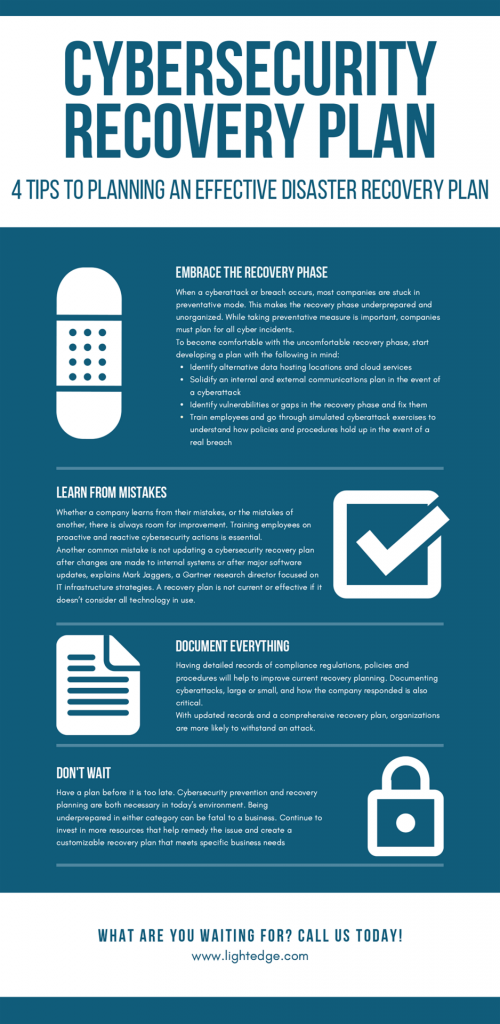Cyberattacks and breaches have become unavoidable threats for many organizations. Without preparation and the proper cybersecurity plan, cyberattacks leave companies in a state of chaos making it difficult for them to get on their feet again. While there are many rigorous preventative compliance regulations, no federal compliance regulations focus on specifically recovering from a data breach or a cybersecurity incident. Let’s discuss how enterprises can test, develop and implement an effective recovery plan in case of disaster.
What is a Cybersecurity Recovery Plan?
A cybersecurity recovery plan is about information asset protection and often requires detailed root cause analysis, evidence collection, preservation and a coordinated response.
Experts recommend having multiple plans in place. These plans can be layered with policies and procedures to adapt to any environment.
Cybersecurity Recovery Plan Goals
Defining what your recovery goals and priorities are is the first step. Whether you’re an international enterprise whose goals may include recovering information systems in backup location or a local business who may need to preform standard operating procedures in alternative ways.
There’s not just one single goal, so focus on the specific needs of the business to create a customized plan. Here are general tips to keep in mind when creating a cybersecurity recovery plan:

Contact Lightedge Today
Security, compliance and control is LightEdge’s main priority, and is the backbone of every service that we offer. LightEdge goes as far as accepting compliance risk on behalf of our customers. If you would like to learn more about LightEdge’s cybersecurity offerings, get in touch with one of our compliance and security experts. Contact us here to get started.




